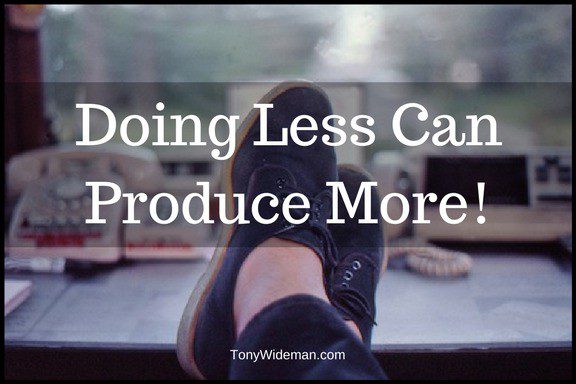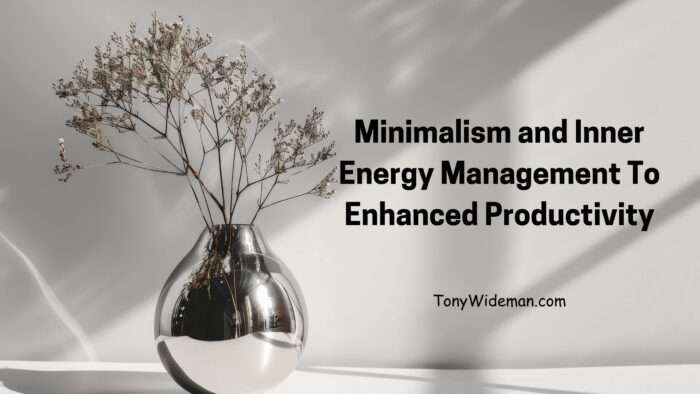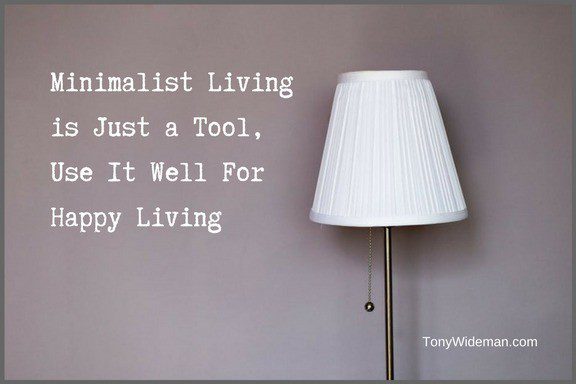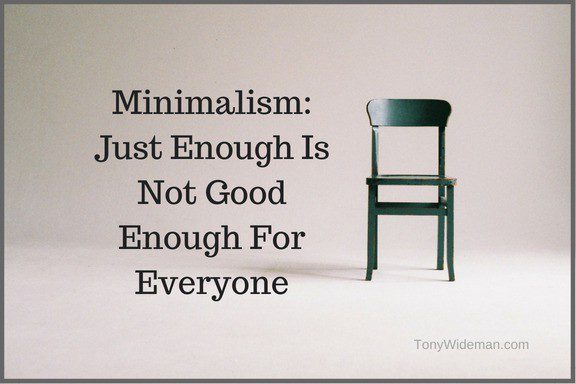Simplify Your Life: 7 Steps To Becoming A Work Minimalist
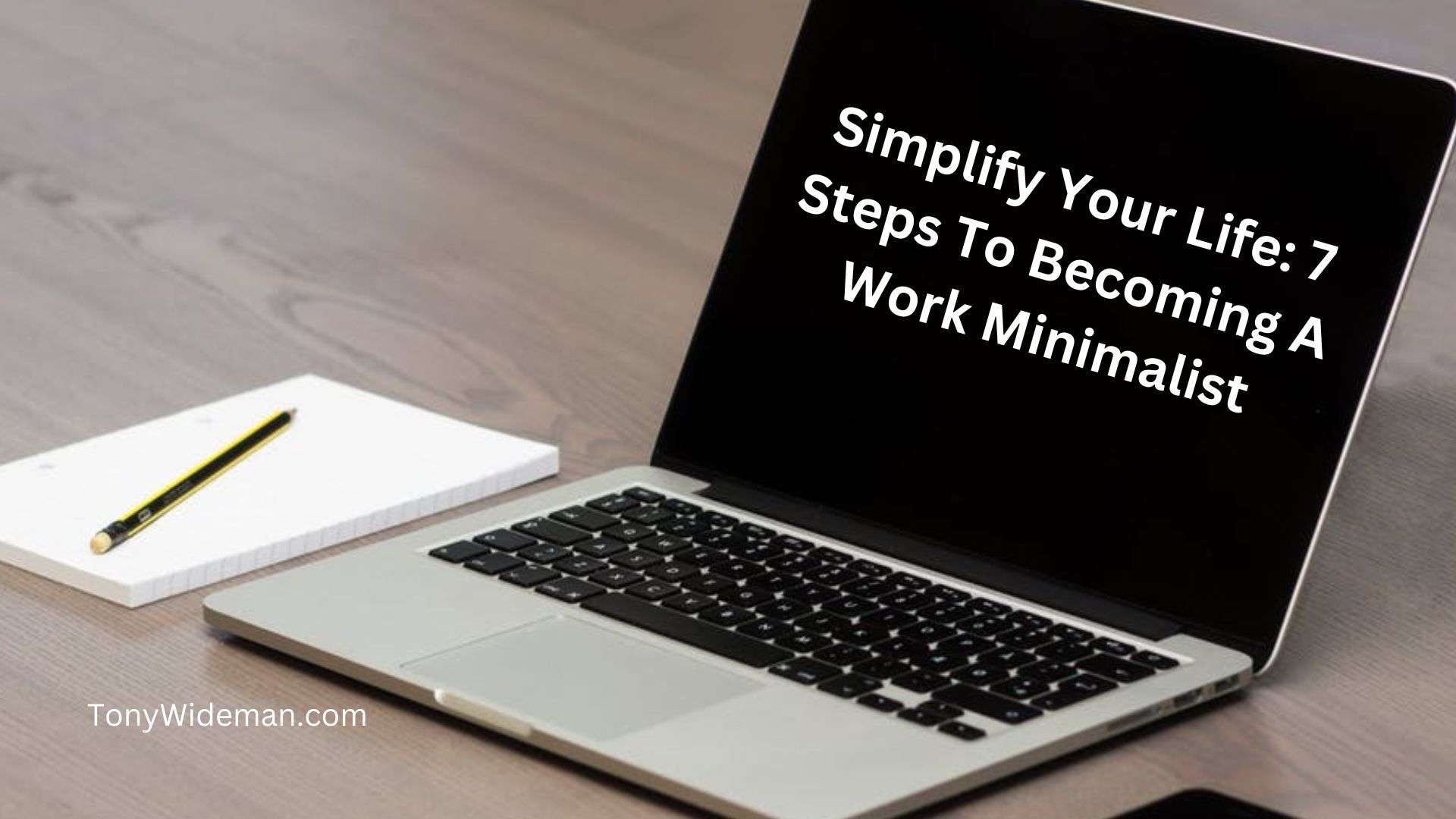
I’ve been a minimalist most of my life. Except for a small children’s book collection, most of my possessions are necessary to my day-to-day existence.
I attribute my minimalist lifestyle to having moved cross-country with my family as a child and becoming obsessed with changing my living situation whenever I felt like it. It is too hard to move often if you own lots of stuff.
Minimalism has taken off in recent years, challenging individuals to break out of the consumerist cycle and strive to own fewer material things. Some interpretations of minimalism take this to the extreme, such as the 100 Thing Challenge or “How To Fit Everything Into a 42 Litre Backpack.”
This move toward material minimalism has also begun to take root in business culture, with more and more folks following what is often called “work minimalism” or “essentialism.”
The “Culture of Busy”
Since the 1980s, employees have increasingly felt pressured to work more hours. In periods of economic uncertainty, employees often work more to distinguish themselves from fellow employees and prove their dedication to the company.
The current startup boom has only exacerbated this trend, as late hours and working on weekends are seen as required sacrifices to get your company off the ground. Additionally, smartphones and social media have made us more accessible than ever, confusing the definition of “being on the clock” and blurring the line between work and personal time.
One of the most common ways I see this cultural trend manifested is the humblebrag regarding how little sleep one gets.
I am guilty of sharing how tired I am with coworkers because I was up late working on a work-related project, hoping they would be impressed with my dedication.
.
What is Work Minimalist
Minimalism is the idea that we should have fewer things. Work minimalism is the belief that working fewer hours does not necessarily mean one is more productive.
Instead, work minimalists or “Essentialists,” as author Greg McKeown calls them, are focused on “the disciplined pursuit of less but better.”
Each day should have a strict set of goals and a set amount of time to complete those goals. By restricting the time to finish a task, Essentialists believe work is performed more efficiently while avoiding burnout and stagnation.
While researching her book “Overwhelmed: Work, Love, and Play When No One Has the Time,” author Brigid Schulte came across one company that is implementing this theory with its employees.
Menlo Innovations, a software design firm based in Michigan, is very strict regarding its 40-hour workweek and views staying late as a sign of employee inefficiency.
The company states that employees who cannot figure out how to do their job in 40 hours will be fired.
Beginning Your Work Minimalist Journey
As with material minimalism, there is a spectrum for approaching work minimalism. Timothy Ferriss advocates for a significantly reduced schedule in his book “The 4-Hour Work Week,” for example. However far you choose to go in your pursuit of less but better, here are a few tips to get you started:
- Say no to a good opportunity. Author Greg McKeown explains being asked to do something isn’t a good reason to get involved. Being involved in more won’t necessarily bring more to our lives. Instead of taking on another client or project, say no—no matter how good the opportunity is. Only when you give time to your projects will you begin to determine what you are passionate about?
- Don’t get stuck in traditions. Doing something simply because you’re asked or always done something is not productive either. Getting caught up in traditions can prevent you from moving forward. Shake things up and try something new!
- Rest. Stick to bedtime and ensure you are getting enough sleep to feel energized when you wake up.
- Eliminate before adding. Make the rule for yourself of one in, one out. If you want to coach your daughter’s soccer team, leave the nonprofit board you’re currently serving. Again, focusing on fewer projects at a time will make it more transparent what you’d like to invest your time in.
- Focus on a limited number of tasks daily and devote real time to them. Set 2-3 goals for yourself each morning and focus on only those goals. Projects go faster when you aren’t thinking about working through a to-do list of 30+ items.
- Just like a goldfish will grow to the size of the bowl it occupies, tasks will take up the time you allot them. If you give yourself three hours for a task, the task will take three hours. Pushing yourself to complete something in less time will help you increase efficiency.
- Lastly, lead by example. If you are the manager or owner of the company, you must follow a 40-hour workweek. If you work late hours, your employees will follow your example. If you answer emails on weekends, your employees will also feel the need to do so.
.
Many great resources are available to get more tips on how to work more efficiently, not just more. Here are a few of my favorite reads:
- Overwhelmed: Work, Love, and Play When No One Has the Time, by Brigid Schulte
- Essentialism: The Disciplined Pursuit of Less, by Greg McKeown
- TED Talks on productivity

by Katie Hurst
.


